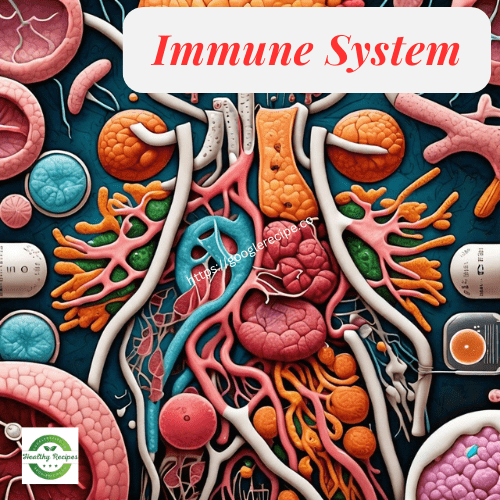Sickle cell Anaemia
Understanding Sickle Cell Anemia: A Genetic Disorder with Global Impact
Sickle cell Anaemia? Sickle cell anemia is a genetic disorder that significantly affects red blood cells. As an inherited condition, it can be passed from parents to their children. But what exactly is sickle cell anemia?
Red blood cells consist of a red protein named hemoglobin, that is important for carrying oxygen overall the body. Normally, these cells are round and flexible, allowing them to move easily through narrow blood vessels.
However, in individuals with sickle cell anemia, a mutation in the hemoglobin gene causes the hemoglobin to form strands within the red blood cells.
This faulty gene results in the red blood cells becoming inflexible and adopting a crescent or sickle shape. The term “sickle” comes from a tool used to cut long grass, which these cells resemble.
The Consequences of Sickle-Shaped Cells
These abnormally shaped red blood cells can cause blockages in the blood vessels. When this occurs, the red blood cells cannot pass through to deliver oxygen and glucose to the tissues and organs.
The lack of oxygen causes severe pain, known as a sickle cell crisis. The duration of a crisis can vary from a few minutes to several weeks and can lead to life-threatening complications.
For instance, if a blockage occurs in the brain’s blood vessels, it can cause a stroke by depriving brain cells of oxygen.
Inheritance of Sickle Cell Anemia
Sickle cell anemia is inherited in a recessive manner, meaning that an individual must have two copies of the faulty allele to manifest the disorder.
People with one copy of the allele are carriers; their red blood cells contain 50% abnormal hemoglobin and are slightly more fragile.
If two carriers have children, the offspring can either be affected by the disorder, be carriers themselves, or be completely unaffected.
Global Prevalence
Approximately 4.4 million people worldwide suffer from sickle cell anemia, with an additional 43 million individuals being carriers. A significant 80% of those affected live in Central Africa.
The condition is also relatively common in parts of India, the Middle East, and among people of African descent living in other parts of the world.
The Link Between Sickle Cell Anemia and Malaria
The high prevalence of sickle cell anemia in these regions is not coincidental. These areas are also heavily affected by malaria. Interestingly, carrying the sickle cell allele provides a protective advantage against malaria.
The malarial parasite, transmitted by female mosquitoes, spends part of its life cycle inside red blood cells. In carriers of the sickle cell allele, the fragile red blood cells often burst before the parasite can fully develop, thereby interrupting its life cycle and preventing the disease.
This protective effect increases the likelihood of carriers surviving childhood and passing on the sickle cell allele to their offspring. Consequently, regions with high malaria prevalence also see higher numbers of individuals suffering from sickle cell anemia due to the increased chance of two carriers having children.
Conclusion
Sickle cell anemia is a complex disorder that not only impacts the health and well-being of individuals but also has a significant genetic and epidemiological relationship with regions affected by malaria.
Understanding this disorder, its inheritance patterns, and its global distribution highlights the intricate interplay between genetics and environmental factors in shaping human health.
Frequently Asked Questions (FAQs) About Sickle Cell Anemia
1. What is sickle cell anemia?
Sickle cell anemia is an inherited genetic disorder that affects the shape and function of red blood cells. It causes red blood cells to become rigid and shaped like a crescent or sickle, leading to various health complications.
2. How is sickle cell anemia inherited?
Sickle cell anemia is rooted in a relapsing demeanor. This means an individual must inherit two copies of the faulty hemoglobin gene, one from each parent, to have the disorder.
Individuals with only one copy of the gene are carriers and do not show symptoms but can pass the gene to their offspring.
3. What are the symptoms of sickle cell anemia?
Symptoms include episodes of severe pain (sickle cell crises), anemia, fatigue, swelling in the hands and feet, frequent infections, delayed growth, and vision problems. The harshness of symptoms can vary extensively amid human being.
4. What causes a sickle cell crisis?
A sickle cell crisis occurs when the sickle-shaped red blood cells block blood flow through small blood vessels. This blockage prevents oxygen from reaching tissues, causing intense pain and potential organ damage.
5. How is sickle cell anemia diagnosed?
Sickle cell anemia is typically diagnosed through a blood test called hemoglobin electrophoresis. Newborn screening programs also test for the disorder at birth.
6. What treatments are available for sickle cell anemia?
Treatment options include pain management, blood transfusions, hydroxyurea (a medication that reduces the frequency of crises), and bone marrow or stem cell transplants.
Regular medical care and healthy lifestyle choices are also crucial for managing the condition.
7. Can sickle cell anemia be cured?
Presently, the only likely cure for sickle cell anemia is a bone marrow or stem cell emigrate. Still, there are serious hazards associated with this treatment, and it is not appropriate for all individuals. Research into novel therapies and possible cures is ongoing.
8. How does sickle cell anemia affect life expectancy?
Life expectancy for individuals with sickle cell anemia has improved with advances in medical care. Many people with the condition live into their 40s, 50s, and beyond, although life expectancy can still be reduced compared to the general population.
9. Why is sickle cell anemia more common in certain regions?
Sickle cell anemia is more prevalent in regions where malaria is common, such as Central Africa, parts of India, and the Middle East.
Carrying one copy of the sickle cell gene provides some protection against malaria, increasing the likelihood of survival and passing the gene on to the next generation.


